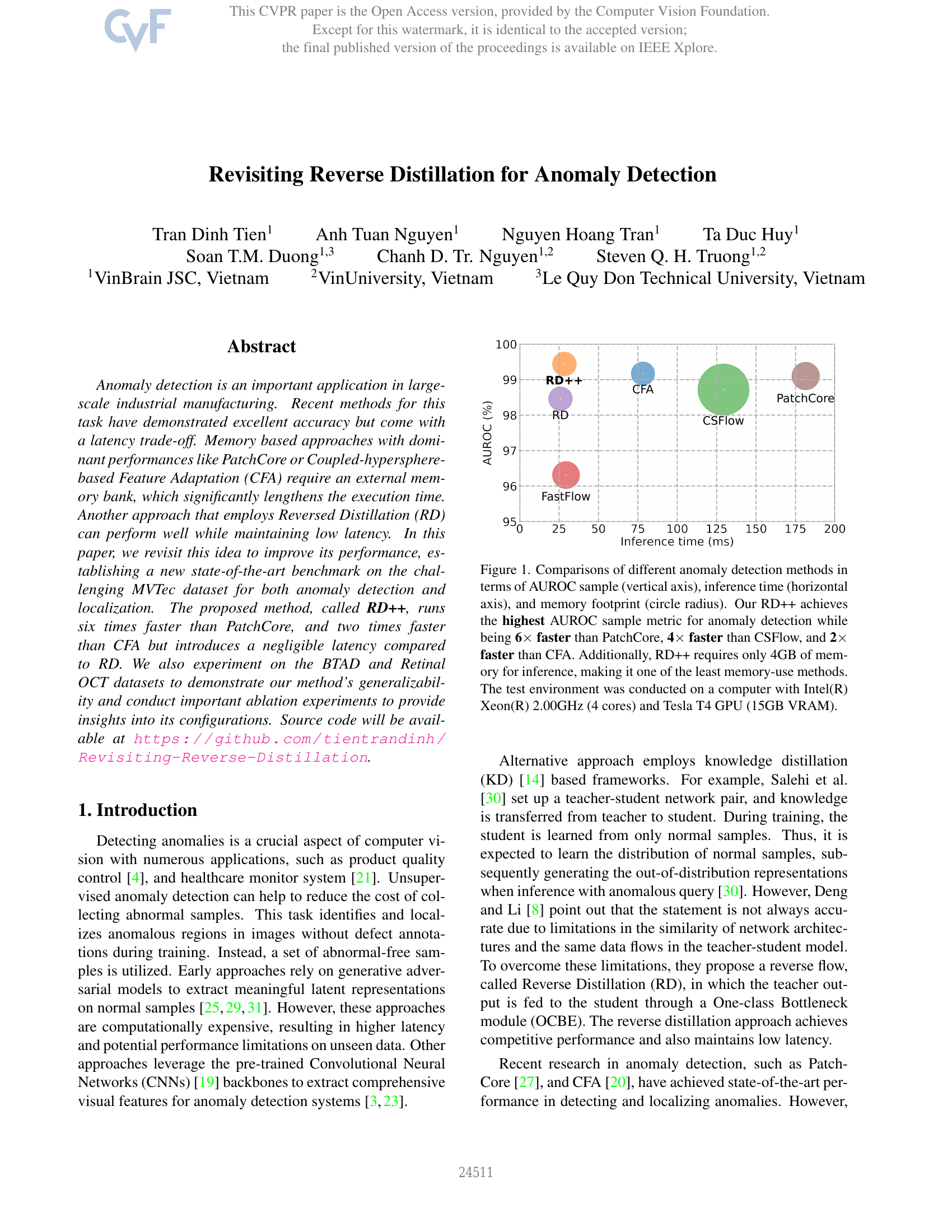Command Palette
Search for a command to run...
{Steven Q. H. Truong Chanh D. Tr. Nguyen Soan T.M. Duong Ta Duc Huy Nguyen Hoang Tran Anh Tuan Nguyen Tran Dinh Tien}

Abstract
Anomaly detection is an important application in large-scale industrial manufacturing. Recent methods for this task have demonstrated excellent accuracy but come with a latency trade-off. Memory based approaches with dominant performances like PatchCore or Coupled-hypersphere-based Feature Adaptation (CFA) require an external memory bank, which significantly lengthens the execution time. Another approach that employs Reversed Distillation (RD) can perform well while maintaining low latency. In this paper, we revisit this idea to improve its performance, establishing a new state-of-the-art benchmark on the challenging MVTec dataset for both anomaly detection and localization. The proposed method, called RD++, runs six times faster than PatchCore, and two times faster than CFA but introduces a negligible latency compared to RD. We also experiment on the BTAD and Retinal OCT datasets to demonstrate our method's generalizability and conduct important ablation experiments to provide insights into its configurations. Source code will be available at https://github.com/tientrandinh/Revisiting-Reverse-Distillation.
Benchmarks
| Benchmark | Methodology | Metrics |
|---|---|---|
| anomaly-detection-on-btad | Reverse Distillation ++ | Detection AUROC: 95.63 Segmentation AUROC: 97.43 |
| anomaly-detection-on-insplad | RD++ (ResNet-18) | Detection AUROC: 90.07 |
| anomaly-detection-on-mvtec-ad | Reverse Distillation ++ | Detection AUROC: 99.44 Segmentation AUPRO: 94.99 Segmentation AUROC: 98.25 |
| anomaly-detection-on-mvtec-ad-textures | Reverse Distillation ++ | Detection AUROC: 99.8 |
Build AI with AI
From idea to launch — accelerate your AI development with free AI co-coding, out-of-the-box environment and best price of GPUs.